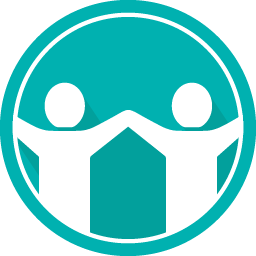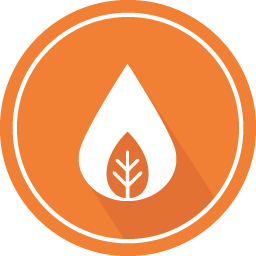Neighborhood-Scale Sustainable Development Case Study
Neighborhood Overview
The Sun Valley Neighborhood in Denver, CO is undergoing a massive redevelopment. This historically low-density, low-income community along the banks of the Platte River is one of the most geographically central neighborhoods in the metro Denver region and home to some of the city’s most vulnerable residents, the majority of whom live in the Sun Valley Homes housing project. Today, 94 percent of the neighborhood’s housing market is subsidized, with only five percent of the homes occupied by the owners. The Sun Valley Ecodistrict is poised to create a new model of community transformation, with equity, environmental justice and public health as its driving forces.
Sun Valley is home to a diverse population including Denver’s largest concentration of recent
immigrants who bring their local customs and culture to the area, yet face language, social, educational and economic barriers. The district is largely industrial and includes an electric substation, oil tank farm and legacy district steam power plant. Interspersed are a Denver Housing Authority (DHA) housing project, site homes, a school, community center and light industrial and warehouse buildings.
Located along the Platte River and just south of the Denver Bronco’s Sports Authority Field at Mile High Stadium, the area is geographically isolated from downtown Denver by major highways, with few points of access. When it is completed, Sun Valley will be transformed from a high poverty, high vacancy district with large swaths of surface parking, to a next-generation neighborhood, home to 3,000 residents,300 jobs and new or enhanced neighborhood services, making it one of the City’s most vibrant mixed-use, transit-serving communities.
Sun Valley is primed and ready for smart and thoughtful redevelopment. In 2013, Denver Regional Transportation District (RTD) opened the Decatur-Federal Light Rail Station in the neighborhood.
Having already secured a joint grant from the U.S. Department of Housing and Urban Development (HUD) and the Department of Transportation, the City of Denver and the DHA also completed a comprehensive Master Plan, Transformation Plan and General Development Plan.
The work over the last several years has been recognized with an additional Choice Neighborhoods Initiative planning grant from HUD that will allow the DHA and the City to continue to bring partners like EcoDistricts to the table, helping drive revitalization while helping to repair the decades-long pattern of disinvestment.
Sun Valley + Target Cities: Advancing a Comprehensive Sustainability Strategy
Sun Valley first participated in the 2013 EcoDistricts Incubator in Portland, OR, a three-day intensive designed to accelerate EcoDistricts-modeled urban regeneration projects. Sun Valley stakeholders, led by the Denver Housing Authority (DHA), believed the creation of an “ecodistrict” would help them advance a cutting-edge sustainability strategy that built on the legacy of their Mariposa Development.
The DHA and City of Denver continued to engage EcoDistricts when they joined the EcoDistricts Target Cities program in 2014. The Target Cities program provided customized group workshops, technical assistance and peer networking to help align stakeholder interests and responsibilities, develop a long-term governance model and strategy framework, complete an EcoDistricts Assessment and Roadmap (integrated footprint analysis and project identification) and support the launch of catalytic projects. Participation in the program helped align critical stages of project planning and implemention with the core components of the EcoDistricts Protocol framework, through its three Imperatives, six Priorities, and three Implementation phases.
In summer 2016, the DHA formed the 501(c)3, Sun Valley Ecodistrict (SVED) to solidify a governing model to attract strategic partners, implement the district-scale solutions proposed in the Transformation Plan and EcoDistricts Roadmap, and monitor district progress and success indicators.
Over the course of the Target Cities program, the Sun Valley team traveled to five U.S. cities for four workshops, one charrette and one convening hosted at the 2014 EcoDistricts Summit. Each host city — including Boston, MA, Washington, DC, Atlanta, GA and Denver, CO — acted as a learning laboratory in which Target Cities members saw other communities’ projects first-hand and shared stories and strategies. After Target Cities concluded at the end of 2016, the Sun Valley leadership team evaluated its progress and continued challenges.
Early Wins
Through seven years of extensive planning and four years of engagement with EcoDistricts, DHA and the Sun Valley stakeholders have systematically worked through a series of planning and formation milestones with an emphasis on authentic outreach and master planning activities. This has resulted in a set of local and national strategic and funding partnerships that distinguish Sun Valley from most public housing authority projects. After recently receiving a $30 million HUD Choice Neighborhood implementation grant, the redevelopment of Sun Valley is moving into the first phase of implementation, championing numerous sustainability projects and programs, including those described below.
 EQUITY: Sun Valley’s equity priorities are advanced by an new organization created to address child welfare, food security and other core community issues. In addition, as part of the redevelopment process, DHA is using phased relocation to ensure the redevelopment of 333 units of Sun Valley Homes is minimally disruptive to the vulnerable populations they house through the specification of one-for-one replacement of housing units and bedrooms per housing unit. Current residents are given the opportunity to accept either a voucher for new housing of their choice outside of DHA’s new redevelopment, or a guaranteed unit. Residents are provided adequate
EQUITY: Sun Valley’s equity priorities are advanced by an new organization created to address child welfare, food security and other core community issues. In addition, as part of the redevelopment process, DHA is using phased relocation to ensure the redevelopment of 333 units of Sun Valley Homes is minimally disruptive to the vulnerable populations they house through the specification of one-for-one replacement of housing units and bedrooms per housing unit. Current residents are given the opportunity to accept either a voucher for new housing of their choice outside of DHA’s new redevelopment, or a guaranteed unit. Residents are provided adequate
temporary housing in the neighborhood while their building is redeveloped. More than 60 percent of the resulting 750 apartment units in the redevelopment will be public and affordable housing.
 PLACE: The Sun Valley Ecodistrict (SVED) is designing a 30,000 square foot multi-use office building in the neighborhood that will include community engagement space and offices for SVED, University of Denver and other professional for profit and nonprofit entities financed through impact capital. The Center also will include an art gallery, food services and a resource library to educate visitors and residents on the development history and progress. Once the district energy system is in place (described below), the Center will feature a performance tracking and information center to inform residents and visitors about the district’s energy savings and usage. The Center also will integrate and display data and metric tracking of key neighborhood and human indicators throughout the redevelopment timeline.
PLACE: The Sun Valley Ecodistrict (SVED) is designing a 30,000 square foot multi-use office building in the neighborhood that will include community engagement space and offices for SVED, University of Denver and other professional for profit and nonprofit entities financed through impact capital. The Center also will include an art gallery, food services and a resource library to educate visitors and residents on the development history and progress. Once the district energy system is in place (described below), the Center will feature a performance tracking and information center to inform residents and visitors about the district’s energy savings and usage. The Center also will integrate and display data and metric tracking of key neighborhood and human indicators throughout the redevelopment timeline.
 RESOURCE REGENERATION: In 2014, DHA received a grant from the Environmental Protection Agency (EPA) to help fund energy and planning in Sun Valley. Work included modeling alternate district-based energy solutions and green infrastructure with small-scale impacts and solutions. As a result, SVED plans to develop a district-wide energy system for the Sun Valley neighborhood. The system will supply gas- and electric-generated heating and cooling to buildings throughout the district, and has the potential to reduce annual energy use by 20 percent. The DHA also plans the installation of solar photovoltaic panels throughout Sun Valley. The panels will generate over five megawatts of energy and supply approximately 30 percent of Sun Valley’s electricity annually.
RESOURCE REGENERATION: In 2014, DHA received a grant from the Environmental Protection Agency (EPA) to help fund energy and planning in Sun Valley. Work included modeling alternate district-based energy solutions and green infrastructure with small-scale impacts and solutions. As a result, SVED plans to develop a district-wide energy system for the Sun Valley neighborhood. The system will supply gas- and electric-generated heating and cooling to buildings throughout the district, and has the potential to reduce annual energy use by 20 percent. The DHA also plans the installation of solar photovoltaic panels throughout Sun Valley. The panels will generate over five megawatts of energy and supply approximately 30 percent of Sun Valley’s electricity annually.
 PROSPERITY: SVED is creating a micro-business incubator to provide residents and small businesses with space for start-up opportunities. The incubator will include flexible space for micro-restaurants, micro-retail and community events. Twenty percent of this space will be reserved for Sun Valley Homes residents to empower local job opportunity and entrepreneurship.
PROSPERITY: SVED is creating a micro-business incubator to provide residents and small businesses with space for start-up opportunities. The incubator will include flexible space for micro-restaurants, micro-retail and community events. Twenty percent of this space will be reserved for Sun Valley Homes residents to empower local job opportunity and entrepreneurship.
 CONNECTIVITY: A new street grid, complete street design, access to the new light rail station, better river crossings, pedestrian access to the river and connectivity through grid improvements will be designed throughout the neighborhood. A new bike rack system designed by DHA’s Enterprise Rose Architecture Fellow was installed in November 2016. Denver’s B-Cycle bike share program will locate two new bike share stations in the neighborhood to allow residents to check out bikes and return them at locations throughout the City.
CONNECTIVITY: A new street grid, complete street design, access to the new light rail station, better river crossings, pedestrian access to the river and connectivity through grid improvements will be designed throughout the neighborhood. A new bike rack system designed by DHA’s Enterprise Rose Architecture Fellow was installed in November 2016. Denver’s B-Cycle bike share program will locate two new bike share stations in the neighborhood to allow residents to check out bikes and return them at locations throughout the City.
 LIVING INFRASTRUCTURE: Sun Valley is at the confluence of two water systems that feed into the South Platte River. Since 2010, the City and County of Denver has invested over $4 million to regenerate the system to create open waterways with fully landscaped banks and restored natural habitats. The restoration has improved the environmental integrity, aesthetics and safety of the area through flood control and stormwater impoundment.
LIVING INFRASTRUCTURE: Sun Valley is at the confluence of two water systems that feed into the South Platte River. Since 2010, the City and County of Denver has invested over $4 million to regenerate the system to create open waterways with fully landscaped banks and restored natural habitats. The restoration has improved the environmental integrity, aesthetics and safety of the area through flood control and stormwater impoundment.
Lessons Learned + Continued Challenges
At the end of the two-year Target City program engagement period, each participating district was evaluated by its internal staff and board, and by EcoDistricts personnel. The points below reflect shared assessments by all parties and describe both the opportunities and challenges that Sun Valley has faced in the effort to regenerate the neighborhood.
The Sun Valley Station Area is larger than the DHA development area, requiring a more robust governance model that provides the SVED with masterplanning authorization for land outside of DHA’s control. This will require a balancing act as SVED stakeholders look at the optimal land use for existing DHA land, plus additional public and private land holdings in the context of the entire area.
There are a variety of anti-poverty initiatives underway in West Denver. Many of the efforts are led by different public agencies and nonprofit organizations, and not coordinated. In order for the redevelopment of Sun Valley to be successful, integration with ongoing and future efforts in adjacent neighborhoods must occur. SVED is looking to position itself as a hub of such activities.
While DHA has an excellent record of retaining existing low-income residents through the phased relocation process, it remains a disruptive event in the lives of already vulnerable populations and the process is compounded by language barriers. As a result, many community members have negative perceptions of redevelopment, and question realistic goals of inclusive gentrification and whether growth can be managed to benefit existing residents.
Connecting Sun Valley with downtown Denver remains challenging. A major highway, viaduct, football stadium, river and the Auraria Higher Education Center Campus create physical barriers between Sun Valley and the surrounding neighborhoods. Moreover, the contrast in demographics acts as a psychological barrier. RTD’s West Rail Line provides a substantial improvement in connectivity, but has had limited impact on perception or accessibility of the district.
Sun Valley has limited land and infrastructure capacity to handle the future planned developments. Additionally, the source of funding for infrastructure improvements is not confirmed, and the life cycle of proposed projects remains uncertain.
Next Steps
Key next steps for the collaboration between EcoDistricts and Sun Valley include the following:
Support Sun Valley through EcoDistricts Certification with project management. As neighborhood leadership moves through the certification process, EcoDistricts can provide technical support and training, and serve as an information hub to connect the district with others for peer learning and
the application of best practices. (2017-2019)
Provide capacity building to Sun Valley as the newly formed nonprofit becomes the hub for anti-poverty and equity initiatives for Sun Valley’s diverse community. From staffing and resource development to branding and communications, EcoDistricts’ technical support will help ensure that this new organization is positioned to become the neighborhood service hub that
Sun Valley’s residents and leaders envision. (2018-2020)
In Their Own Words
“With EcoDistricts at the table before development began, we were able to plan for holistic energy, water, wastewater and other district-based solutions that will change the entire face of how we develop, how we conserve resources, how we save money, how we interact, and therefore how people from all income levels can live sustainably together.”
– Ismael Guerrero, Executive Director, Denver Housing Authority
